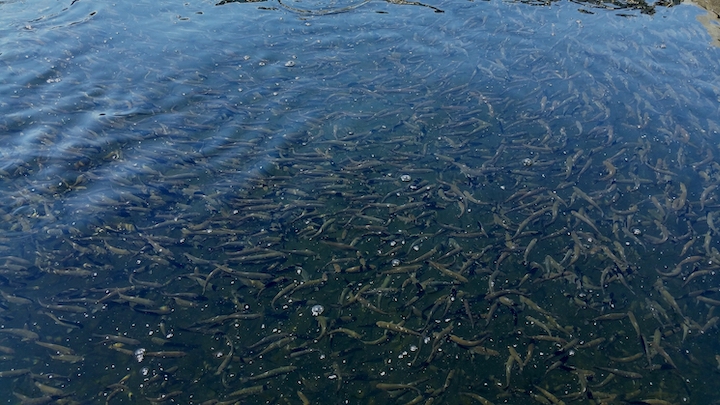
Legislators’ Proposed WDFW Operating Budgets Look To Cut Hatchery Production
Editor’s note: For more details on what lawmakers’ proposed budgets do and don’t fund versus WDFW’s requests, and what the potential impacts would be, see this WDFW breakdown.
Washington fish hatcheries face “significant impacts” under state lawmakers’ proposed budgets, particularly from cuts in the House of Representative’s two-year pending plan.
That’s according to a WDFW all-staff memo following the release in recent days of both the House and Senate’s initial 2025-27 operating budgets.

Under the House’s proposal, there’s no money for Southwest Washington’s Toutle and Skamania Hatcheries starting this July.
“This cut would result in the closure of two facilities, loss of 1.5 million salmon and steelhead production, creating risks for conservation, fishing opportunities, and local economies,” wrote Morgan Stinson, WDFW’s chief financial officer, in a Monday memo.
The Senate version would provide a one-time hit of $1.5 million for the two Mitchell Act facilities; WDFW had asked $1.9 million.
The House budget would also reduce hatchery operations to the tune of $4.56 million, and that worries Larry Phillips of the American Sportfishing Association.
He says WDFW has limited latitude in where it can make cuts to hatcheries, and it falls primarily on the trout side because of comanagement, Endangered Species Act, Pacific Salmon Treaty and other responsibilities that salmon and steelhead production are wrapped around.
But Phillips indicates that cutting trout production would have follow-on impacts, as the fishery is one that WDFW makes money on, and it supports huge numbers of angler trips as well as youth and family-oriented opportunities.
If you think you’ve heard that Washington hatcheries are in budget trouble before, you’re not wrong. Just as hatcheries power a significant portion of Washington’s consumptive fisheries, they consume a significant portion of WDFW’s budget, so they’re always going to be under threat when money becomes tighter – even as they provide vast and widespread economic benefits to the state.
But this go-around comes at a time when state lawmakers are also seriously looking at hiking the cost of fishing and hunting license fees for most state sportsmen by a whopping 38 percent. Phillips forecasts it all will impact fishing and its future in the Evergreen State.
Speaking of that license increase, revenues from it ($19.3 million every two years) as well as a proposed Discover Pass price hike would essentially just go toward replacing a like amount of General Fund dollars that legislators are looking to suck out of WDFW’s budget, a “robbing Peter to pay Paul” situation, as one close watcher put it.
A number of important programs such as salmon and steelhead monitoring, support for Columbia River ESA permitting and Lake Washington predator suppression are not funded in either legislative chambers’ spending packages, representing an $8 million hit to WDFW’s two-year budget, according to Stinson.
While the Senate would provide $1.6 million for dealing with pinniped predation, the House only funds it to the tune of $1.1 million. Both are far cries from how much WDFW had requested – $3.1 million – for various harbor seal and sea lion management activities both in the Columbia and Puget Sound. And neither chamber’s budget would provide any money for the latter region, a hint that bipartisan House Joint Memorial 4004 probably never actually had a chance with this legislature.
There are other reductions for WDFW in the proposals.
“These include large losses for Enforcement officers working on fisheries compliance and the Biodiversity work the Department was appropriated this biennium. Aquatic Lands Enhancement Account grants are also proposed to be eliminated,” Stinson wrote in his staff memo.
And both the Senate and House propose a $320,000 cut to the Western Washington pheasant program beginning in 2026, a move that stakeholders worry would put it in the red and potentially lead to its shuttering, bad news in a week that’s already served up a bad story about WDFW’s Westside ringneck ranch.
Both chambers do agree on providing $7.24 million for preventing invasive mussels from gaining a foothold in the state, $1.39 million for wildlife disease response, $780,000 for wolf recovery and $260,000 for Wolf Advisory Group activities.
As for next steps, WDFW will now send letters to state budget writers in both chambers outlining their preferred courses, all while keeping stakeholders apprised about potential impacts. What’s known as the “conference budget” will come out towards the very end of the legislative session in late April and be voted on by lawmakers. Assuming it’s passed, the final operating budget will be reviewed by Governor Bob Ferguson to sign and/or veto parts he doesn’t like.
